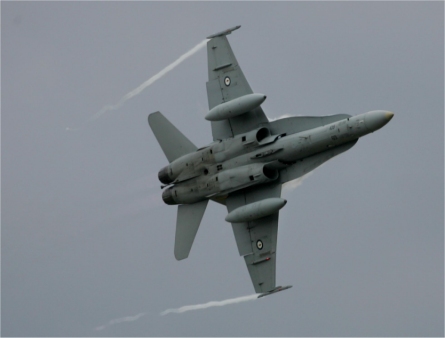Australia's Defence Science and Technology Organisation (DSTO) plans to flight test an "Active Smart Patch" next year after demonstrating the feasibility of using a self-powered in-situ system to monitor the structural health of composite bonded repairs.
The DSTO's Smart Patch programme has been under way since the late 1990s, culminating in flight tests on a Royal Australian Air Force Boeing F-18 between March 2006 and February 2007.
The tests involved a boron-fibre/epoxy-resin composite patch about 0.8mm thick bonded to an aileron hinge on the F-18. Piezoelectric film and ceramic elements were bonded to the hinge to convert mechanical strains induced during flight to electrical energy, which was stored in a capacitor.
The piezoelements generated a charge when strains were experienced in the aileron hinge. The reading was stored in memory and wirelessly downloaded by ground personnel each week using a hand-held interrogator.
This was connected to a docking station allowing personnel anywhere to download the data using a mobile phone link.
|
|---|
Flight tests were carried out on a Royal Australian Air Force Boeing F-18 |
Flight tests of the Smart Patch demonstrated the feasibility of using the system to monitor the structural health of composite bonded repairs. "It is envisaged this technology will assist in alleviating some of the certification concerns associated with composite bonded repairs in high-value applications," says the DSTO.
"The demonstrator also showed that self-powered in-situ structural health monitoring systems could feasibly be retrofitted to other structural 'hot spots' in ageing aircraft platforms," says the DSTO, adding that such a system could eliminate the need for existing expensive and time consuming maintenance approaches.
An extension of the Smart Patch programme - the Active Smart Patch - is under development. This uses a wide-area acoustic-ultrasonic damage detection technique with piezotransducers that allow inspection of both the composite bonded patch and underlying metallic substructure.
This system will not require the aircraft to fly to take a patch health reading, says the DSTO, with the patch health interrogation performed by "exciting" the piezotransducers using an external voltage signal.
Source: Flight International
























